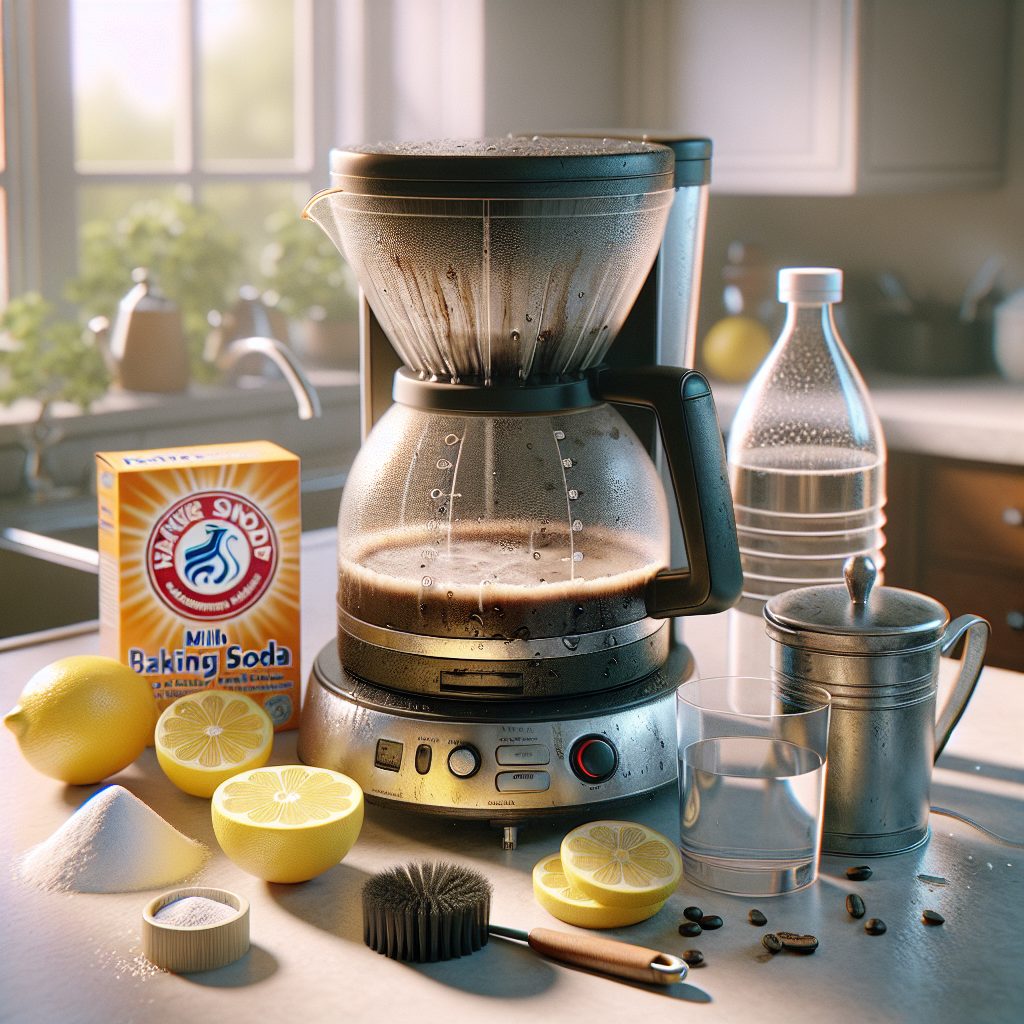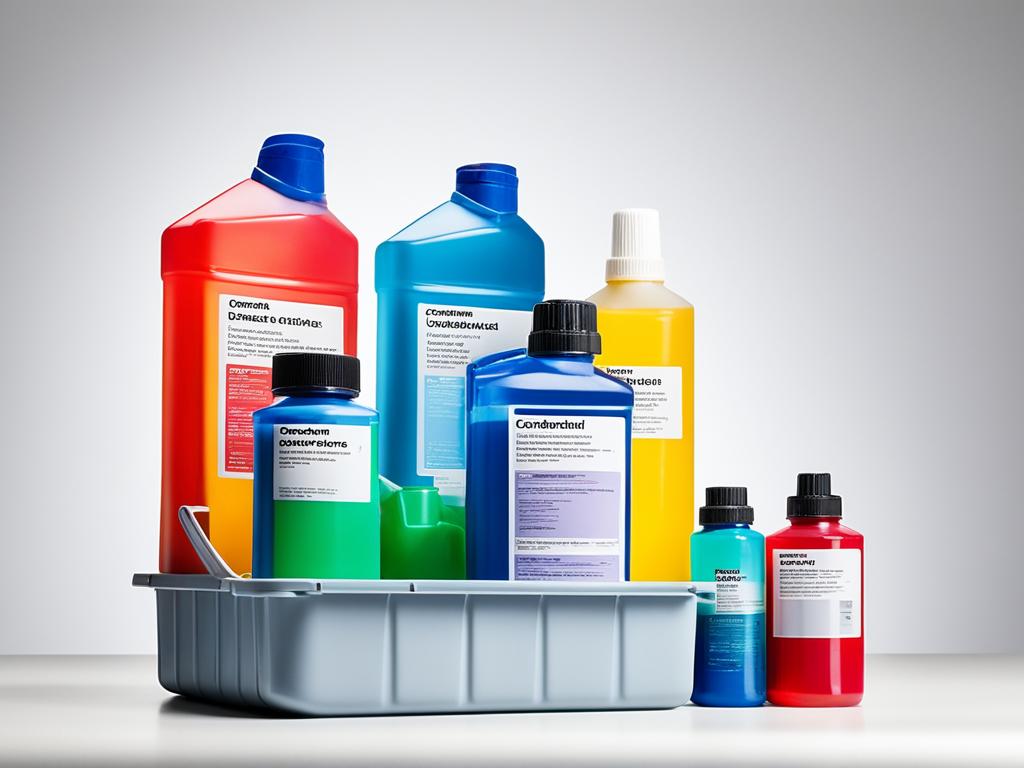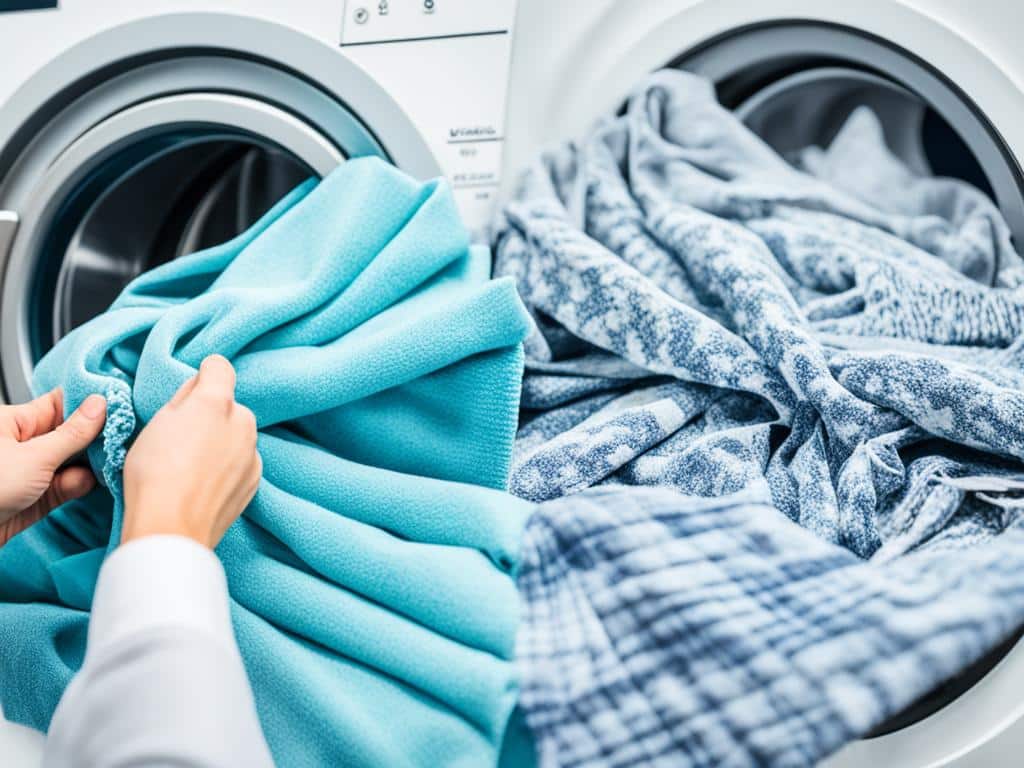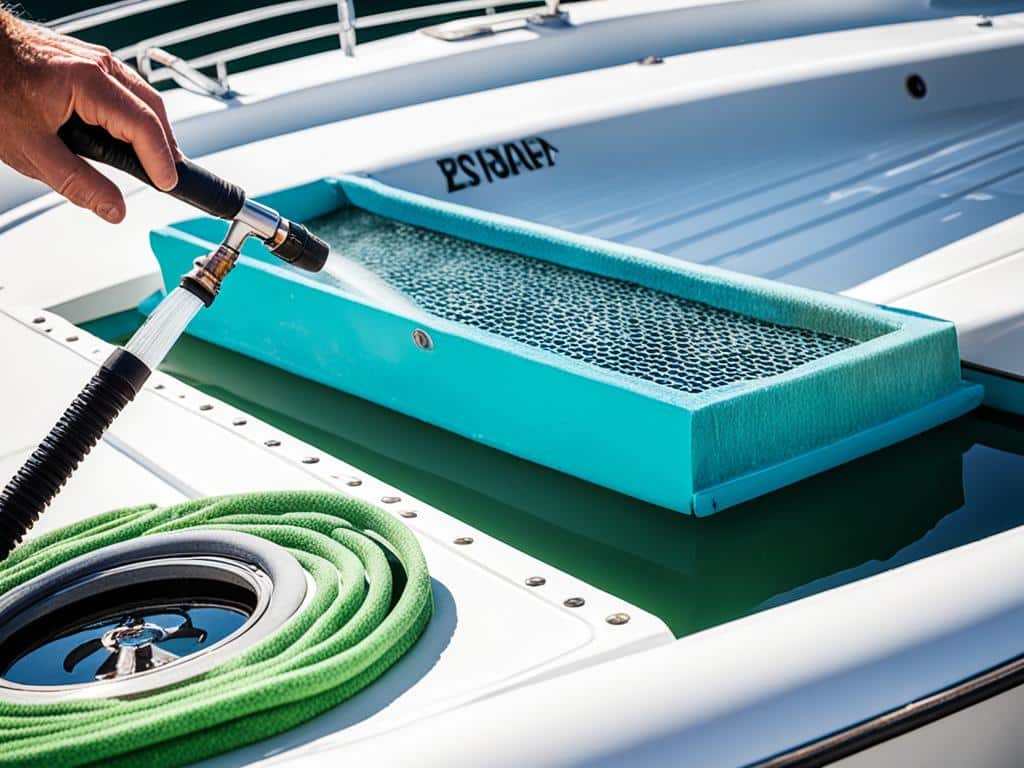
In the world of natural cleaning, vinegar often takes center stage due to its acidic properties that can cut through grease and mineral deposits with ease. However, when it comes to cleaning coffee makers, not everyone is a fan of the residual pungency that vinegar can leave behind. Coffee connoisseurs know that the purity of their brew is paramount, and even the slightest taint in taste is unacceptable. This is where alternatives to vinegar come in, harnessing the power of natural ingredients that are not only effective at removing buildup but also ensure that the next cup of coffee is as flawless as the last. Solutions range from ordinary household items to unexpected organic materials, each possessing unique features that make them a worthwhile consideration for any coffee aficionado looking to maintain their machine in the most natural way possible.
As we delve further into the realm of natural cleansing agents tailored for coffee aficionados, the forthcoming segment promises to introduce novel entities that can replace vinegar in the quest for a pristine coffee maker. These alternatives not only align with eco-friendly practices but also harmoniously blend with the delicate components of your coffee machine, ensuring no foreign tastes invade the intricate flavor profile of your beloved java. Stay tuned as we explore the key takeaways, including how each substitute works, why it might be a preferable choice for your coffee apparatus, and the step-by-step process to employ these natural cleaning marvels — ensuring a seamless and enjoyable coffee experience, cup after cup.
Key Takeaways
1. Lemon Juice Method: You can use a natural acid like lemon juice as an alternative to vinegar for cleaning your coffee maker. Mix one part lemon juice with one part water and run the mixture through a brewing cycle. Afterwards, run a cycle with clean water a couple of times to rinse any lemon taste.
2. Baking Soda Solution: A baking soda solution can effectively clean your coffee maker without vinegar. Add a quarter cup of baking soda to the water reservoir, run a brew cycle, then rinse several times with clean water to ensure no baking soda residue remains.
3. Hydrogen Peroxide: Hydrogen peroxide is another non-toxic option for cleansing your coffee maker. Fill the water chamber with a mixture of one part hydrogen peroxide to two parts water, run a brew cycle, and then rinse thoroughly with clean water cycles.
4. Denture Tablets: Denture cleaning tablets can surprisingly clean coffee makers efficiently. Fill the coffee maker’s reservoir with warm water, drop in a couple of denture tablets, let them fully dissolve, and then run a brew cycle. After this, perform a few rinses with clean water.
5. Descaling with Commercial Products: There are specific commercial cleaning products available for descaling coffee makers. Opt for ones that are environmentally friendly and non-toxic. Follow the manufacturer’s instructions for use, usually involving running a brew cycle with the cleaner followed by several rinse cycles.
What Are the Best Natural Alternatives to Clean Your Coffee Maker Without Using Vinegar?
Baking Soda: A Gentle and Effective Cleaning Agent
Cleaning your coffee maker doesn’t necessarily require harsh chemicals or even common acidic staples like vinegar. Baking soda, a mild alkaline powder, can be a great option to clean your coffee maker naturally. Not only is it non-toxic and safe for most surfaces, but its gentle abrasiveness can help scrub away coffee residue and mineral buildup.
To use baking soda, simply add a quarter cup to the water reservoir of your coffee maker. Run a brewing cycle using just the baking soda solution, then rinse the machine by running plain water through for one or two more cycles. This should leave your coffee maker clean and fresh, without the lingering scent of vinegar.
Lemon Juice: A Natural Acid for Sparkling Results
Lemon juice is another excellent natural alternative for cleaning a coffee maker. Its citric acid content cuts through the grease and scale buildup in much the same way as vinegar, but with a more pleasant, citrus fragrance. Fill the water chamber with a mixture of equal parts water and lemon juice, then run the cycle. Afterward, run a cycle or two of plain water before brewing coffee. Not only does this method clean well, but it also leaves behind a fresh, lemony aroma.
Salt and Ice: An Unconventional Approach for Glass Carafes
If your coffee maker includes a glass carafe, a combination of salt and ice can be a dynamic cleaning duo. The salt serves as a gentle abrasive, while the ice helps to agitate it for more thorough scouring. Fill the carafe with ice, add a couple of tablespoons of salt, and swirl the mixture around for a few minutes. The ice and salt will help scrub away coffee stains. Afterward, rinse the carafe well with water.
Hydrogen Peroxide: The Disinfectant Powerhouse
Hydrogen peroxide has disinfectant properties and can be used to sanitize your coffee maker. Fill the reservoir with a solution of one part hydrogen peroxide to two parts water, run a brewing cycle followed by several cycles with just water to ensure all traces of peroxide have been removed. Always check your coffee maker’s manufacturer guidelines, as some materials may not be compatible with hydrogen peroxide.
Denture Tablets for Deep Cleaning
An unexpected but highly effective method for cleaning coffee makers is using denture tablets. These tablets are designed to eliminate bacteria and remove stains from dentures, and they can do the same for your coffee maker. Drop a couple of denture tablets into the water reservoir, fill it with water, and run a brewing cycle. After the cycle is complete, make sure to run water through the machine a few more times to remove any residual cleaning agent.
Essential Oils for an Aromatic Touch
Some essential oils have antibacterial properties and can be added to the cleaning mix for a natural deodorizing effect. Oils such as tea tree or eucalyptus can be used; just add a few drops to the water reservoir and let them work their magic during the cleaning cycle. Ensure that the essential oils you choose are safe for ingestion and thoroughly rinse the coffee maker afterward.
Descale With a CLR (Calcium, Lime, Rust) Remover
If you’re dealing with hard water deposits, a calcium, lime, and rust remover, commonly known as CLR, can be a more potent solution. Opt for eco-friendly brands that are free from harmful chemicals. Follow the instructions carefully, usually involving diluting the CLR with water, running it through a brew cycle, and rinsing thoroughly with plain water afterward.
Can You Provide Specific Steps for Natural Cleaning of a Coffee Maker?
- Choose your natural cleaning agent (baking soda, lemon juice, salt and ice, hydrogen peroxide, denture tablets, essential oils, or eco-friendly CLR).
- Prepare the solution or mixture as per the guidelines given for each cleaning agent.
- Pour the natural cleaner into the water reservoir of the coffee maker.
- Run a complete brewing cycle with the cleaning solution.
- Dispose of the cleaning solution and rinse the coffee maker by running several cycles with fresh water to remove any cleaning agent residue.
- Clean the coffee carafe, filter basket, and any removable parts with warm soapy water, or if appropriate, place them in the dishwasher.
- Wipe down the exterior and warming plate of the coffee maker with a damp cloth and a little bit of the cleaning solution, if necessary.
- Reassemble any parts that were removed for cleaning, ensuring everything is dry before use.
- Brew a batch of fresh water one final time before making coffee to ensure all cleaning taste has been removed.
“`html
What natural substances can I use to clean my coffee maker instead of vinegar?
You can use a combination of water and baking soda or lemon juice as an effective natural cleaning solution for your coffee maker. These substances can help disinfect and remove mineral buildup without the strong scent of vinegar.
How often should I clean my coffee maker using natural methods?
Cleaning your coffee maker should be part of your regular routine, ideally once every month. However, if you use your machine more frequently, consider cleaning it every two weeks to maintain optimal performance and flavor.
Can lemon juice effectively descale a coffee maker?
Yes, lemon juice is acidic like vinegar and can dissolve limescale and mineral buildup within your coffee maker. Use a mixture of equal parts water and lemon juice, run this solution through the coffee maker’s brewing cycle for an effective cleaning.
Is it safe to use baking soda for cleaning a coffee maker?
Baking soda is a non-toxic agent that’s safe to use for cleaning a coffee maker. Its alkaline properties can help remove oils and residue. However, ensure it’s completely rinsed out to prevent any baking soda flavor in your coffee.
Are there any particular brands or types of coffee makers that shouldn’t be cleaned with natural products?
Most coffee makers can be cleaned with natural cleaning solutions without any issues. However, you should consult your coffee maker’s manual or manufacturer to ensure there are no specific recommendations or warnings against using certain natural cleaners.
What are the environmental benefits of using natural cleaners in my coffee maker?
Natural cleaners are biodegradable and free from harsh chemicals, reducing your environmental impact. They help limit water pollution and can be safer for wildlife and ecosystems if your wastewater ends up in natural water sources.
Can natural cleaning methods kill bacteria and mold in a coffee maker?
Yes, natural acidic solutions like lemon juice have antibacterial properties that can help eliminate bacteria and mold. However, if your coffee maker has a significant mold issue, you might need to follow specific cleaning processes to disinfect it thoroughly.
Can I clean the carafe and other parts of the coffee maker with the same natural solutions?
Absolutely! You can clean the carafe, filter basket, and other removable parts of the coffee maker with your natural cleaning solution. Just ensure you rinse all parts well with water after cleaning.
How do I ensure all cleaning residue is removed from my coffee maker post-cleaning?
After running the cleaning solution through your coffee maker, perform 2 to 3 full cycles with plain water to rinse any residue. This will ensure that no cleaning agent’s taste or scent remains when you brew your next pot of coffee.
Are there any risks involved in natural cleaning methods for coffee makers?
Natural cleaning methods are generally safe and carry few risks. The most important precaution is to ensure all cleaning agents are completely rinsed away before brewing coffee to avoid altering taste or consuming any leftover cleaning solution.
Final Thoughts
Cleaning your coffee maker without vinegar is not only possible but can be just as effective when using natural alternatives. Natural cleaning methods offer health and environmental benefits, eliminating the need for harsh chemicals and reducing potential impacts on ecosystems. Embracing these eco-friendly cleaning practices contributes positively to both the longevity of your coffee maker and the planet.
Whether you choose to use baking soda or lemon juice, the key is to incorporate these natural cleaning routines into your regular maintenance schedule to ensure your coffee maker continues to produce delicious, pure coffee. With these simple and natural solutions, you can enjoy a cleaner, greener lifestyle, starting with this small but significant routine in your kitchen.
“`



